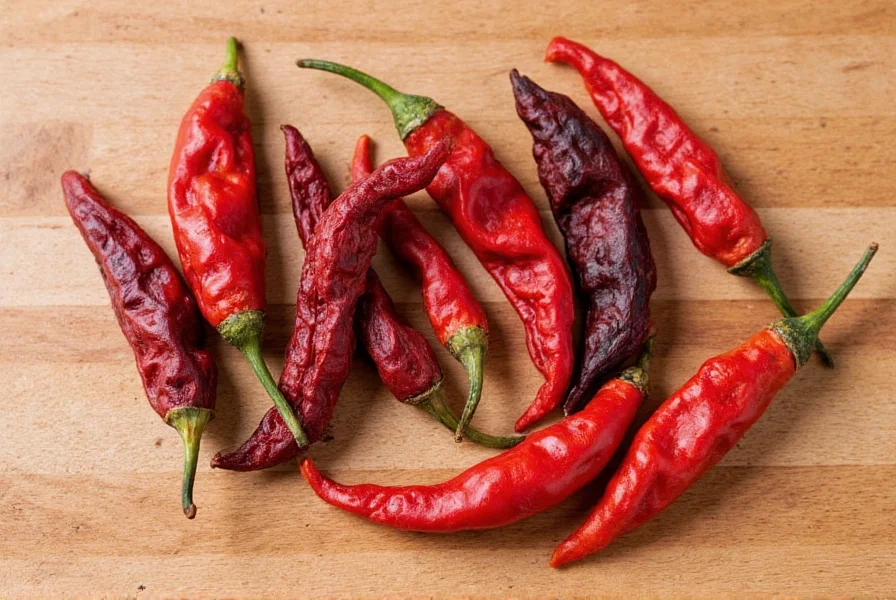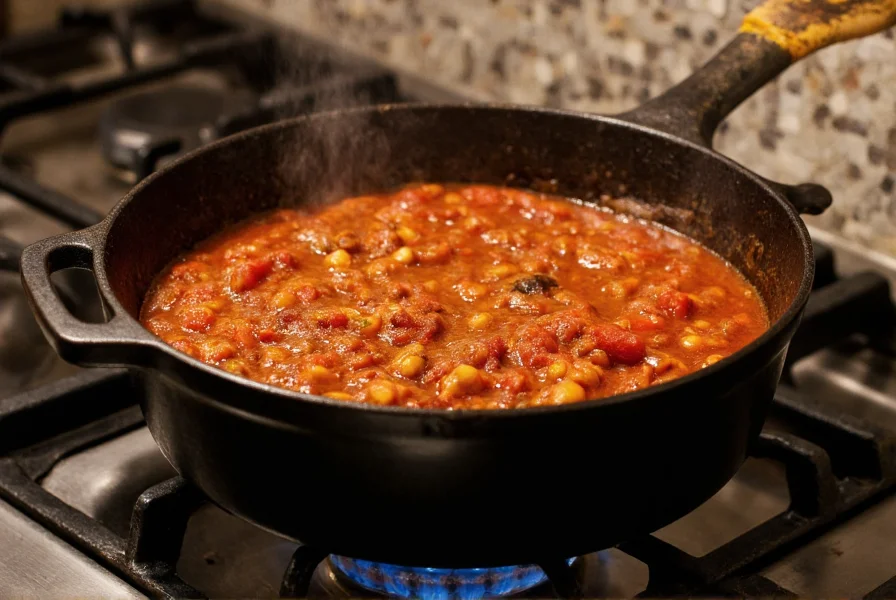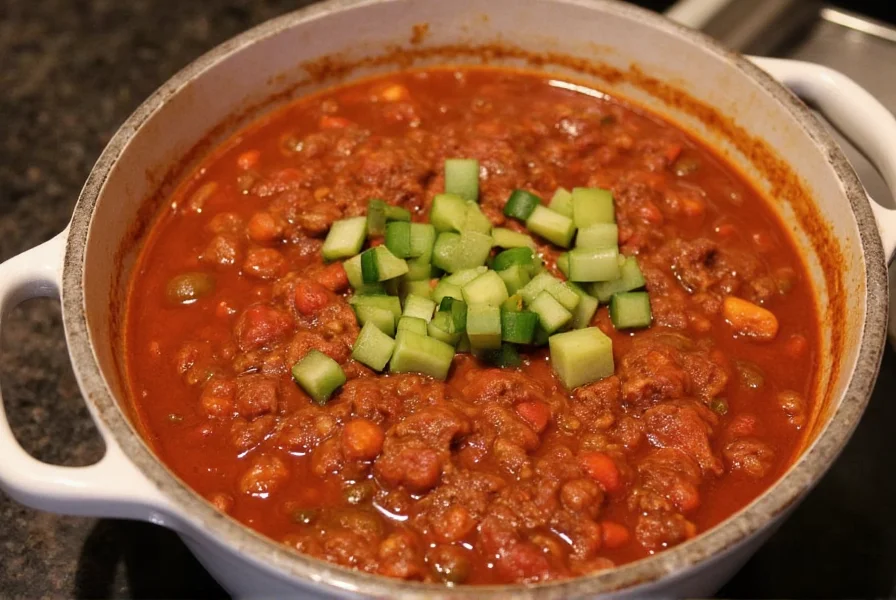For decades, chili con carne has been misunderstood outside its cultural origins. What many consider "chili" today - loaded with beans, tomatoes, and sweet spices - bears little resemblance to the authentic dish that emerged from the Texas-Mexico borderlands in the 19th century. True chili con carne (chili with meat) represents a culinary tradition where simplicity and technique create extraordinary depth of flavor.
The Historical Roots of Authentic Chili Con Carne
Contrary to popular belief, chili con carne didn't originate in Mexico but developed among Tejano communities in Texas. Spanish colonists introduced cattle to the region, while indigenous peoples contributed knowledge of native chilies. By the mid-1800s, trail drivers, cowboys, and settlers perfected the dish as portable sustenance that could simmer for hours over campfires.
Early chili vendors in San Antonio, known as "chili queens," popularized the dish at military posts and public markets. These women sold chili from street carts, serving it in bowls with crackers or bread. The 1893 World's Columbian Exposition in Chicago introduced chili con carne to national audiences, though commercialization soon led to significant deviations from the original preparation.
What Makes Chili Con Carne Authentic: Key Characteristics
Understanding authentic chili con carne requires recognizing what doesn't belong as much as what does. Traditional preparation follows these principles:
| Authentic Element | Common Inauthentic Addition | Reason for Exclusion |
|---|---|---|
| Dried chilies only (ancho, guajillo, pasilla) | Canned chili powder or tomato-based sauces | Traditional recipes use whole dried chilies toasted and rehydrated |
| Beef chuck or brisket, coarsely ground or cubed | Ground beef or alternative meats | Specific cuts provide necessary fat and texture |
| No beans or legumes | Beans, lentils, or other fillers | Beans were never part of traditional Texas-Mexico border recipes |
| Slow simmering (4+ hours) | Quick cooking methods | Time develops complex flavor without thickeners |
Essential Ingredients for Traditional Preparation
The ingredient list for authentic chili con carne remains remarkably simple, reflecting its frontier origins where cooks worked with limited provisions. Each component serves a specific purpose in creating the distinctive flavor profile.
Meat Selection
Authentic chili con carne uses beef chuck or brisket, cut into 1/2-inch cubes or coarsely ground. The substantial fat content (20-30%) proves essential for flavor development. Traditional recipes specify suet (raw beef fat) when leaner cuts are used. Avoid pre-ground meat, which often lacks sufficient fat and texture.
Chilies: The Flavor Foundation
The distinctive flavor comes from a carefully balanced blend of dried chilies:
- Ancho chilies (dried poblanos) - provide deep, raisin-like sweetness
- Guajillo chilies - contribute bright acidity and moderate heat
- Pasilla chilies (dried chilacas) - add complex berry notes and earthiness
Never substitute canned chili powder - authentic preparation requires toasting, rehydrating, and pureeing whole dried chilies to extract their full flavor potential. This traditional technique for making chili con carne from scratch creates a depth impossible to achieve with commercial spice blends.

Traditional Texas Chili Con Carne Recipe
This authentic chili con carne recipe follows historical preparation methods documented in early 20th century Texas cookbooks. The process requires patience but yields complex flavors that justify the time investment.
Ingredients
- 3 lbs beef chuck, cut into 1/2-inch cubes
- 4 oz beef suet (or substitute with additional fatty beef)
- 6 dried ancho chilies
- 8 dried guajillo chilies
- 4 dried pasilla chilies
- 6 cloves garlic, roasted
- 2 tsp cumin seeds, toasted
- 1 tsp Mexican oregano
- 2 quarts beef broth (low sodium)
- Salt to taste
Equipment
Traditional preparation requires specific equipment for authentic results:
- Cast iron Dutch oven (essential for even heat distribution)
- Chile grinder or molcajete (traditional Mexican mortar)
- Muslin bags for spice infusion

Step-by-Step Preparation
1. Prepare the Chile Base
Remove stems and seeds from dried chilies. Heat a dry skillet over medium heat and toast chilies for 30-60 seconds per side until fragrant but not burnt. Place toasted chilies in a bowl and cover with boiling water. Weight with a plate to submerge completely. Soak for 30 minutes until soft.
Drain chilies, reserving 2 cups soaking liquid. Puree chilies with roasted garlic and 1 cup soaking liquid until completely smooth. Strain through fine mesh sieve, pressing with back of spoon. Discard solids.
2. Brown the Meat
Working in batches, sear beef cubes in hot Dutch oven until deeply browned on all sides. Remove meat and set aside. Render suet in same pot until liquid, then return meat to pot.
3. Build Flavor Layers
Add chile puree to meat and fat. Cook over medium heat, stirring constantly, for 10-15 minutes until puree darkens and separates slightly from fat (this crucial step develops flavor). Add toasted cumin and oregano.
4. Slow Simmer
Pour in beef broth and remaining chile soaking liquid. Bring to gentle simmer, then reduce heat to lowest setting. Partially cover and cook for 4-6 hours, stirring occasionally, until meat is fork-tender and sauce has thickened naturally.
5. Final Seasoning
Skim excess fat from surface. Season with salt to taste. Authentic chili con carne should have a rich, complex flavor with balanced heat - adjust with additional chile puree if needed.
Traditional Serving Methods
In its authentic form, chili con carne serves simply with minimal accompaniments that don't distract from the main dish:
- Oyster crackers - traditional accompaniment since the 19th century
- Raw white onion - finely diced for brightness
- Lime wedges - for acidity that cuts richness
- Flour tortillas - for scooping, never corn tortillas
Avoid common modern additions like cheese, sour cream, or beans, which would have been unknown in traditional preparations. The best authentic chili con carne stands perfectly on its own, with the meat and chilies as the undisputed stars.
Common Mistakes That Ruin Authenticity
Even well-intentioned cooks often undermine authenticity through these common errors:
- Using chili powder instead of whole dried chilies - commercial blends contain garlic powder, oregano, and other additives that alter the flavor profile
- Adding tomatoes or tomato paste - acidic tomatoes disrupt the delicate balance of chile flavors
- Including beans - while popular in modern versions, beans have no place in traditional Texas chili
- Overcooking the meat - authentic chili features distinct meat pieces, not shredded or disintegrated meat
- Rushing the process - authentic flavor development requires slow cooking to extract maximum flavor from chilies
Making Authentic Chili Con Carne Your Own
While respecting tradition, authentic chili con carne allows for personal expression within its framework. Experienced cooks develop their signature blend by adjusting the ratio of different chilies to suit their taste. Some prefer more ancho for sweetness, others emphasize guajillo for brightness.
The true test of an authentic chili con carne recipe comes the next day, when flavors have fully melded. Traditional chili connoisseurs consider it a point of pride when their chili improves overnight, developing even greater complexity. This slow evolution of flavor represents one of the dish's most authentic characteristics.











 浙公网安备
33010002000092号
浙公网安备
33010002000092号 浙B2-20120091-4
浙B2-20120091-4